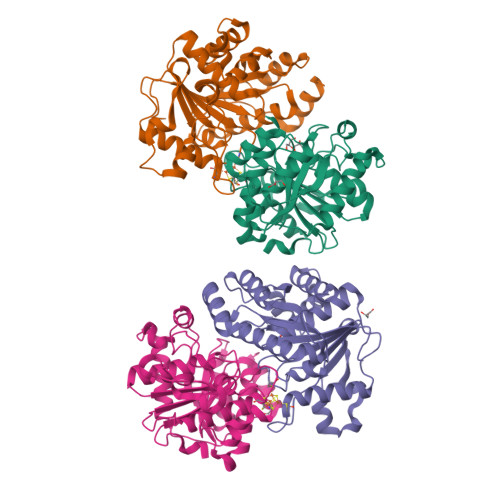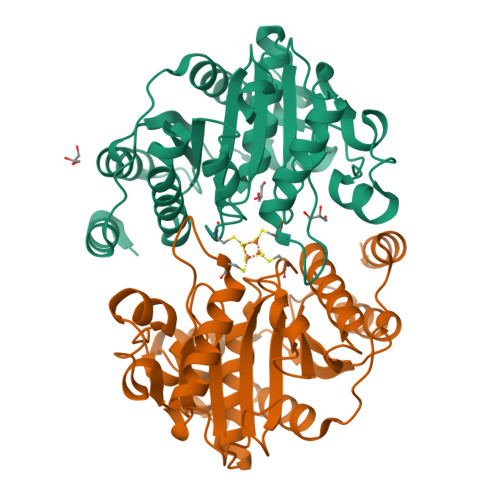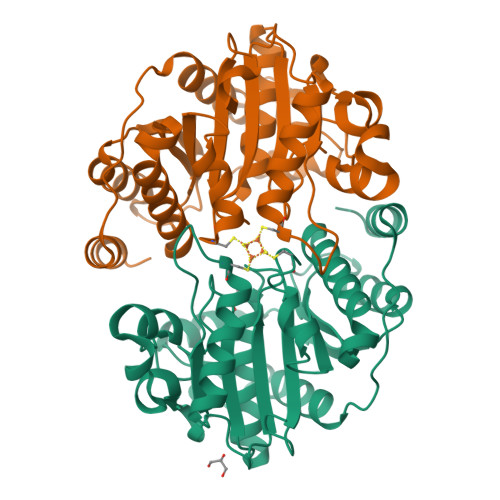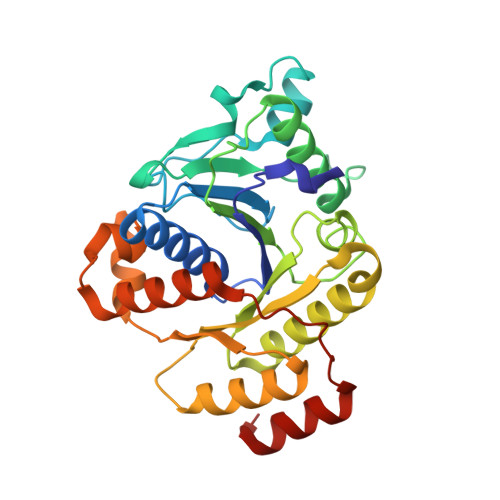Structural comparison of (hyper-)thermophilic nitrogenase reductases from three marine Methanococcales.
Maslac, N., Cadoux, C., Bolte, P., Murken, F., Gu, W., Milton, R.D., Wagner, T.(2024) FEBS J 291: 3454-3480
- PubMed: 38696373
- DOI: https://doi.org/10.1111/febs.17148
- Primary Citation of Related Structures:
8Q50, 8Q5T, 8Q5V, 8Q5W, 8Q5X - PubMed Abstract:
The nitrogenase reductase NifH catalyses ATP-dependent electron delivery to the Mo-nitrogenase, a reaction central to biological dinitrogen (N 2 ) fixation. While NifHs have been extensively studied in bacteria, structural information about their archaeal counterparts is limited. Archaeal NifHs are considered more ancient, particularly those from Methanococcales, a group of marine hydrogenotrophic methanogens, which includes diazotrophs growing at temperatures near 92 °C. Here, we structurally and biochemically analyse NifHs from three Methanococcales, offering the X-ray crystal structures from meso-, thermo-, and hyperthermophilic methanogens. While NifH from Methanococcus maripaludis (37 °C) was obtained through heterologous recombinant expression, the proteins from Methanothermococcus thermolithotrophicus (65 °C) and Methanocaldococcus infernus (85 °C) were natively purified from the diazotrophic archaea. The structures from M. thermolithotrophicus crystallised as isolated exhibit high flexibility. In contrast, the complexes of NifH with MgADP obtained from the three methanogens are superposable, more rigid, and present remarkable structural conservation with their homologues. They retain key structural features of P-loop NTPases and share similar electrostatic profiles with the counterpart from the bacterial model organism Azotobacter vinelandii. In comparison to the NifH from the phylogenetically distant Methanosarcina acetivorans, these reductases do not cross-react significantly with Mo-nitrogenase from A. vinelandii. However, they associate with bacterial nitrogenase when ADP·
4 - $$ {\mathrm{AlF}}_4^{-} $$ is added to mimic a transient reactive state. Accordingly, detailed surface analyses suggest that subtle substitutions would affect optimal binding during the catalytic cycle between the NifH from Methanococcales and the bacterial nitrogenase, implying differences in the N 2 -machinery from these ancient archaea.
Organizational Affiliation:
Microbial Metabolism Research Group, Max Planck Institute for Marine Microbiology, Bremen, Germany.



















